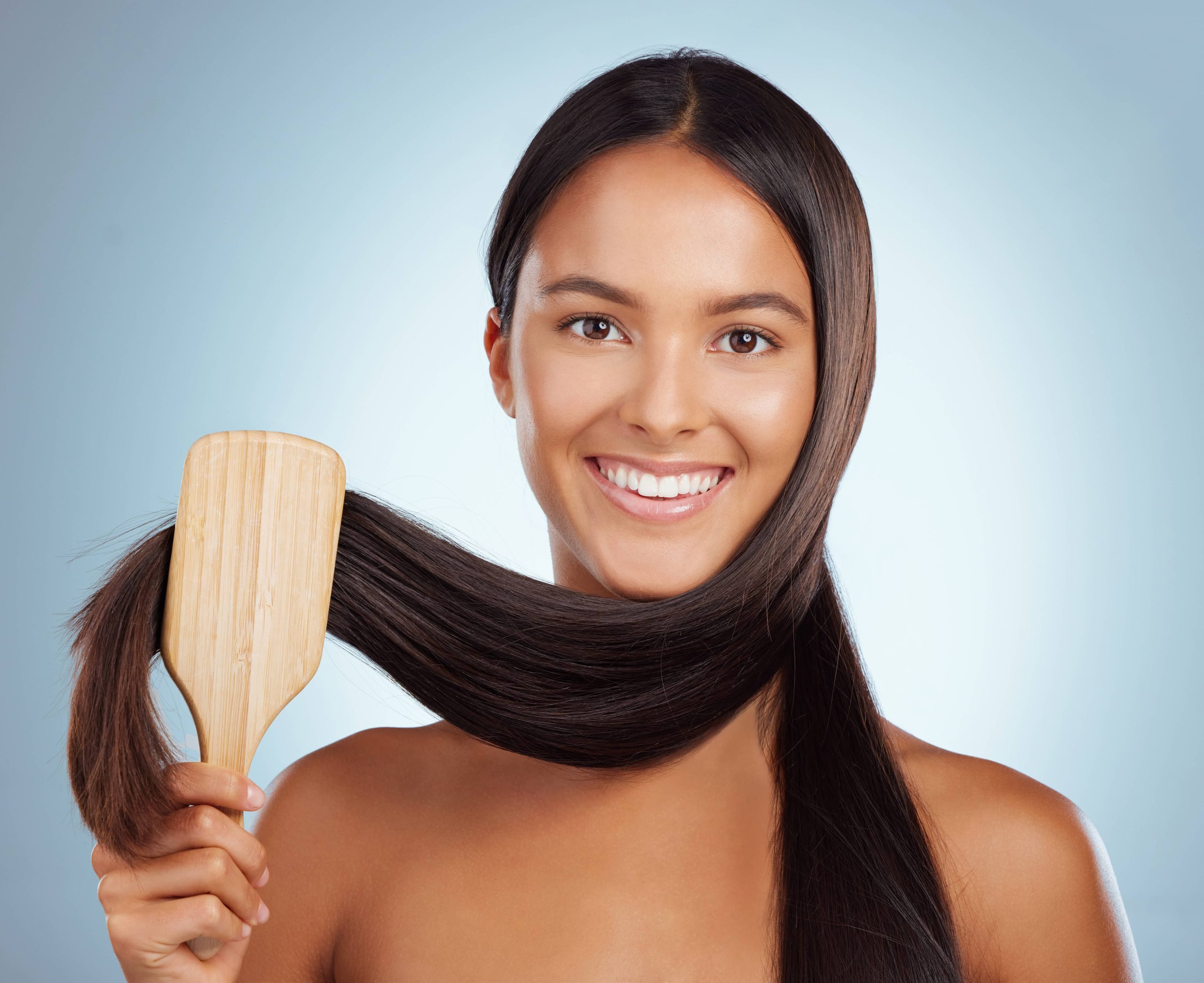
Understanding your hair type is the cornerstone of creating an effective hair care routine. Without this insight, you might find yourself endlessly frustrated by products that seem to work for everyone else but aren’t doing you any favors. In today’s blog post, we’ll explore five methods to accurately identify your hair type and share some additional tips to elevate your hair care game.
1. The Strand Test
The strand test is one of the simplest methods to determine your hair type. It involves examining a single strand of hair to assess thickness, which will give you insight into whether you have fine, medium, or thick hair.
Steps:
– Gently pluck a strand of hair from your head.
– Roll it between your fingers.
– If you barely feel it, you have fine hair.
– If you can feel it slightly, you have medium hair.
– If it feels thick or wiry, your hair is coarse.
Why It Matters: Knowing the thickness of your hair can help you choose the right products. Fine hair, for instance, benefits from lightweight formulations to avoid weighing it down, while coarse hair may need richer, more hydrating products to maintain smoothness.
2. The Float Test
The float test helps to determine your hair’s porosity—how well it absorbs and retains moisture, which significantly affects the way your hair interacts with products.
Steps:
– Take a couple of strands of your clean, product-free hair.
– Drop them into a glass of water.
– Observe:
– If the hair floats, you have low porosity hair (it doesn’t easily absorb water).
– If it sinks after some time, you have normal porosity hair.
– If it immediately sinks, your hair is highly porous.
Why It Matters: Knowing your hair porosity can inform your product choices and application techniques. For example, low porosity hair might need lighter, water-based products that are less likely to sit on the hair, whereas high porosity hair often benefits from richer moisturizers and oils to lock in moisture.
3. The Curl Pattern Test
Understanding your curl pattern, whether straight, wavy, curly, or kinky, can help tailor your hair care approach.
Steps:
– Examine dry hair freshly washed and without product.
– Look at the bends and twists:
– Type 1: Straight
– Type 2: Wavy (loose S pattern)
– Type 3: Curly (distinct spiral shape)
– Type 4: Coily/Kinky (tight curls and zig-zags)
Why It Matters: Different curl patterns have different needs. For example, wavy hair may require lightweight products that enhance the natural wave, while curly and kinky hair can benefit from heavier moisturizing creams to combat frizz and define the curl.
4. Elasticity Test
Hair elasticity is a key indicator of its health and helps to determine how well your hair can return to its original state after being stretched.
Steps:
– Take a strand of wet hair and gently stretch it.
– If it stretches significantly but returns to its original length, you have good elasticity.
– If it stretches a bit and returns with only slight recoil, your elasticity is average.
– If it doesn’t stretch much at all or breaks, it’s low.
Why It Matters: Elasticity impacts styling and strength. Hair with high elasticity can withstand more manipulation and styling, while hair with low elasticity might require more tender loving care and nourishing treatments to improve health and reduce breakage.
5. Scalp Moisture Test
The moisture balance of your scalp can greatly influence your hair’s health and appearance.
Steps:
– Assess your scalp’s oil production, usually a day after washing.
– Oily all over? Greasy hair types generally have oily scalps.
– Dry, itchy, or prone to flakiness? Indicates a dry scalp.
– Balanced, with some natural oils? Considered normal.
Why It Matters: Understanding your scalp type helps guide your routine. Oily scalps might benefit from more frequent washing with a clarifying shampoo, while dry scalps require moisturizing ingredients that soothe and hydrate.
Additional Tips for Hair Care Success
Having identified your hair type using the above methods, here are some additional tips to optimize your routine:
1. Customize Your Products: Choose shampoos, conditioners, and styling products designed specifically for your hair type. The right formulations can enhance your natural texture and improve hair health.
2. Regular Trims: No matter your hair type, regular trims are critical. They help prevent split ends and promote overall hair health, keeping your style neat and preventing breakage.
3. Silk Pillowcases: Switching to silk pillowcases can reduce friction on your hair as you sleep, which means less breakage and frizz, benefiting all hair types.
4. Heat Protection: If you use heat styling tools, always apply a heat protectant. This preventative step is crucial for maintaining the integrity of your hair, especially if it’s fine or chemically treated.
5. Diet and Hydration: A balanced diet rich in vitamins and minerals directly impacts hair health. Hydration is important too; drink plenty of water to support your hair from the inside out.
Understanding your hair type is just the beginning. With the knowledge gained from these methods, you are equipped to forge a path to healthier, more beautiful hair. Armed with both insight and inspiration, it’s time for you to flaunt those locks with confidence!
